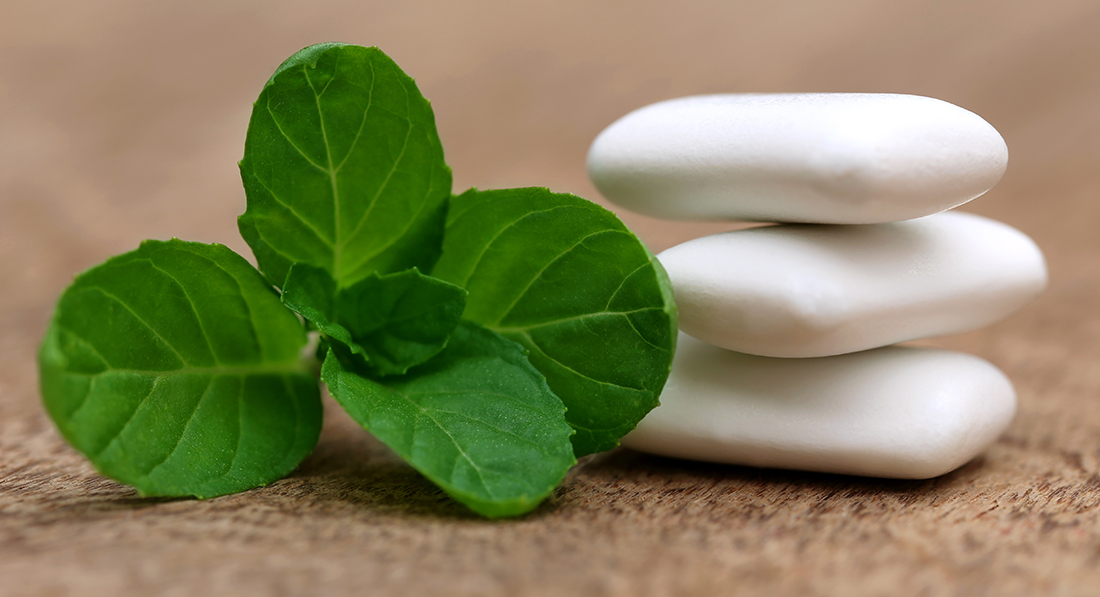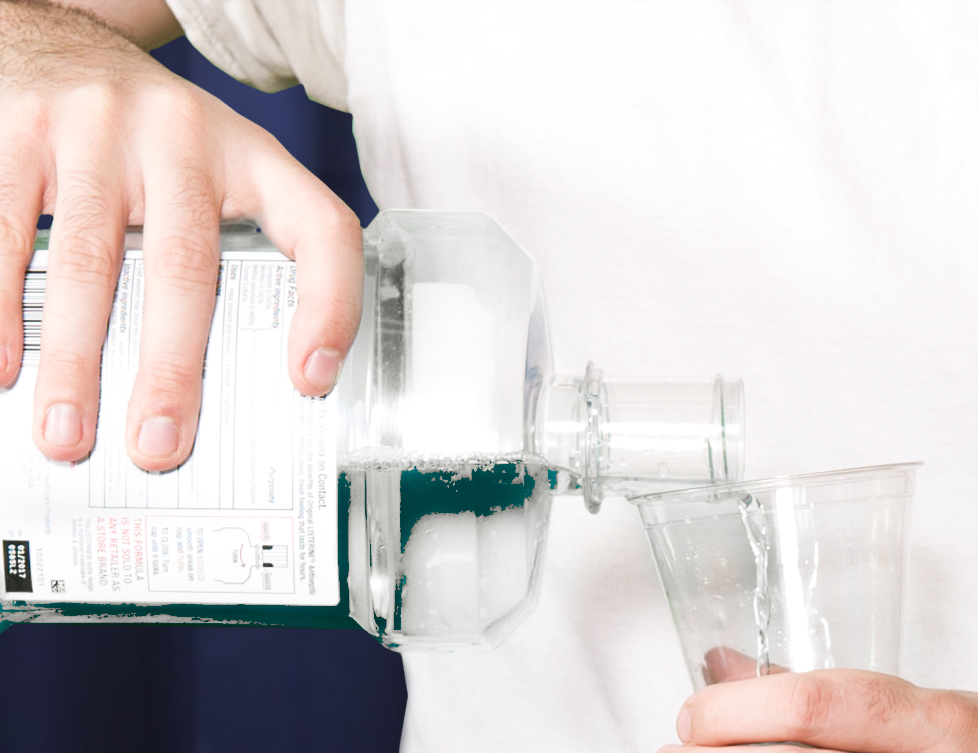Not all breath fresheners are created equal

For all the culprits of halitosis, there are just as many products to combat it. Whether you’re a clinician looking for a solution on behalf of a patient, or the patient who simply seeks cringe-free breath, a little knowledge about key ingredients can go a long way, says Jane Cotter ’09, assistant professor in the Caruth School of Dental Hygiene.
“There’s all kinds of of ingredients in mouthwash and toothpaste, and so you just have to know as a clinician what the active ingredient is in the item being used and if it addresses the problem the patient is having,” Cotter says.
But first things first.

“You should start with halitosis,” says Cotter. “What is causing that bad breath?” Perhaps it’s poor oral hygiene, as volatile sulfur compounds hanging out on the tongue are emitted into the air with each exhalation. Never mind the fact that the mouth, with its warm, moist environment, can at any given time play host to dozens of species of bacteria. In some cases, an infection could be to blame.
“Other things that influence the breath are draining or infected sinuses, acid reflux, or GERD — gastroesophageal reflux disease — any kinds of systemic diseases, along with medication for these conditions, are going to influence the breath,” Cotter says. “As a clinician, you have to evaluate, is it a systemic issue, or is it a local issue? Is there a lot of plaque everywhere, tooth decay, or nasal polyps and drainage? Are there systemic issues or medications that are contributing to the halitosis?
And while the choices to get rid of bad breath are myriad, the majority of products can be divided into two main categories.
“Most over-the-counter mouth rinses, gums and mints will just mask the problem for about 20 minutes,” says Cotter. “You can use them, and they will work for a little bit, but the ‘stink’ comes back.” While sometimes merely masking odor is sufficient, Cotter recommends checking labels for antimicrobial and antibacterial agents to achieve fresh breath by getting to the source of the problem.
Here’s a closer look.
Sugar-free mints
 “Mints are OK,” Cotter says. “Anything that you suck on for a while is just going to flavor the mouth and make the mouth taste better. It’s not necessarily going to fix the problem; it’s just temporary.” Her recommendation: brushing and flossing to remove that broccoli, beef or chicken from the molars, and with it, plaque.
“Mints are OK,” Cotter says. “Anything that you suck on for a while is just going to flavor the mouth and make the mouth taste better. It’s not necessarily going to fix the problem; it’s just temporary.” Her recommendation: brushing and flossing to remove that broccoli, beef or chicken from the molars, and with it, plaque.
The only ingredient found in mints that carries evidence of a cariostatic effect — that is, it tends to inhibit dental decay — is xylitol.
“The thing about it is, you have to have it seven or eight times a day to get a measurable effect,” Cotter says. She does offer some reassurance: While mints containing sorbitol, stevia and other artificial sugar sources are metabolized just like their authentic counterpart, they won’t damage the tissue unless there’s a sensitivity to that type of sweetener.
Gum
Like mints, gum helps to increase salivation.
“The gum is sticky so helps to get food off the teeth, which is kind of gross to think about, but it will stimulate saliva flow,” Cotter says. And more saliva bodes well for teeth, as it has a remineralizing effect, strengthening enamel. When opting for gum, Cotter recommends sugar-free options and moderation, but for a side effect we may not have considered.
“If you’re chewing too much, you can irritate the temporomandibular joint,” Cotter says.
Sprays
Steer clear of breath sprays, and for one good reason: their alcohol concentration. “If you’re using sprays, they will dry out the mouth and cause an odor, because the mouth is supposed to be moist,” Cotter explains.
Occasional use may not be too detrimental, but chronic overuse could lead to drying. While there are sprays that contain no alcohol to help with xerostomia, or dry mouth, these products only last for 20 minutes and need reapplication throughout the day.
Preventive mouthrinses
 Here’s where things get interesting. Ironically, on the prevention front, there’s tried-and-true Listerine, with its coupling of alcohol and essential oils such as eucalyptol and menthol, which lends to its status as an American Dental Association-approved product. The same holds true for its generic forms labeled “antiseptic,” but a newer counterpart, Listerine Zero, sans alcohol — does not boast the ADA seal of approval. One positive: Since alcohol can have a drying effect, these mouthwashes might appeal to those suffering from dry mouth.
Here’s where things get interesting. Ironically, on the prevention front, there’s tried-and-true Listerine, with its coupling of alcohol and essential oils such as eucalyptol and menthol, which lends to its status as an American Dental Association-approved product. The same holds true for its generic forms labeled “antiseptic,” but a newer counterpart, Listerine Zero, sans alcohol — does not boast the ADA seal of approval. One positive: Since alcohol can have a drying effect, these mouthwashes might appeal to those suffering from dry mouth.
Therapeutic mouthrinses
When it comes to treating gum disease, chlorhexidine gluconate is the gold standard. You won’t find it in gum or mints, as it’s only available by prescription. But in the right concentration — no higher than .12 percent — it’s an effective way to disrupt plaque’s cellular wall, effectively killing bacteria before it organizes into biofilm. Plus, it hangs out in the mouth for up to eight hours, working deep into the tissues. For years, Cotter used it on a routine basis prior to treatment for many of her patients at the Baylor Charles A. Sammons Cancer Center, where she worked as the clinic’s dental hygienist prior to joining the dental school faculty in 2016.
Rinses containing stannous fluoride are also effective for treatment, as the tin in the fluoride offers another means to disrupt the plaque cell wall. There’s just one problem: It gets deposited on teeth.
When dealing with halitosis, Cotter says, the best option is to have a dental examination to determine the cause, and whether the factors are local or systemic.
“Clinicians and consumers should look for an antibacterial or antimicrobial active ingredient before recommendation and use to avoid ineffective products and possible adverse effects,” Cotter says.